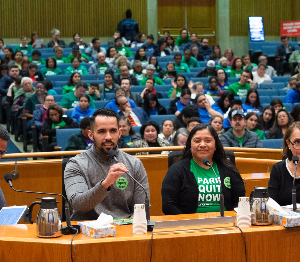July 28, 2021
10:00am – 11:30am
The park equity movement in the U.S. is at a turning point. Parks and other green spaces are crucial for the health and wellbeing of communities—a fact made even clearer during the pandemic. But not all communities have access to these vital resources. Correcting inequities demands advocates’ utmost attention, urgency, and action. A new approach to achieving park equity can unlock transformation and usher in an era in which African American, Latino, and low-income urban communities are fair, just, and green.
Across the U.S., a growing number of jurisdictions are adopting park and green space equity policies. But in many low-income communities of color, longstanding green space inequities still remain. A growing movement of park equity advocates—including community members exercising their own power— is working to change that. In the new paper, Changing the Landscape: People, Parks, and Power, Prevention Institute and Alessandro Rigolon of the University of Utah propose an approach to park and green space equity that prioritizes investing in the capacity of people closest to the problem so that they can drive policy and systems changes that will achieve population-level impacts.
Key takeaways of Changing the Landscape: People, Parks, and Power are below. Please join us for a free webinar to learn about these points in more depth and hear an update on the planning of Robert Wood Johnson Foundation’s new national funding initiative for park and green space equity.
Speakers:
- Elva Yañez, Director of Health Equity, Prevention Institute
- Manal J. Aboelata, Deputy Executive Director, Prevention Institute
- Rachel Bennett, Program Manager, Prevention Institute
- Alessandro Rigolon, Assistant Professor, University of Utah, Department of City & Metropolitan Planning
On this webinar, participants will learn about how:
- Urban parks and green spaces protect public health and help mitigate the impacts of climate change.
- African Americans, Latinos, and people who live in low-income, urban neighborhoods have less access to parks and green spaces than people who live in more affluent or predominantly white communities.
- These inequities are the product of policies and practices like residential segregation, redlining, racially biased planning decisions, and exclusionary zoning, as well as problematic narratives and ways of working in the green space field that have often excluded or tokenized communities of color.
- The traditional approach to addressing these inequities has focused on developing new parks or green infrastructure projects or improving existing projects. While project development is crucial, a sole focus on individual projects fails to address the existing system that produces—and will continue to produce—green space inequities.
- To address the root causes of green space inequities, the parks and green space field should embrace upstream policy and systems change.
- Power drives policy and systems change. Investing in community power building is key to achieving green space equity.
- A growing number of jurisdictions across the U.S. are adopting park and green space equity policies. These include public finance measures that have an equity focus, park agency organizational changes, documentation of green space needs and inequities, joint use policies for school yards, land use policies that facilitate access to green space, policies and ordinances requiring community engagement for park development, and anti-displacement provisions within green space equity initiatives.
- By embracing the approach described in Changing the Landscape: People, Parks, and Power, community residents, advocates, and jurisdictions can solve pervasive, structural inequities and support healthy, vibrant communities.
Support for this paper was provided by the Robert Wood Johnson Foundation.
*Photo credit: Office of Los Angeles County Supervisor Hilda Solis

